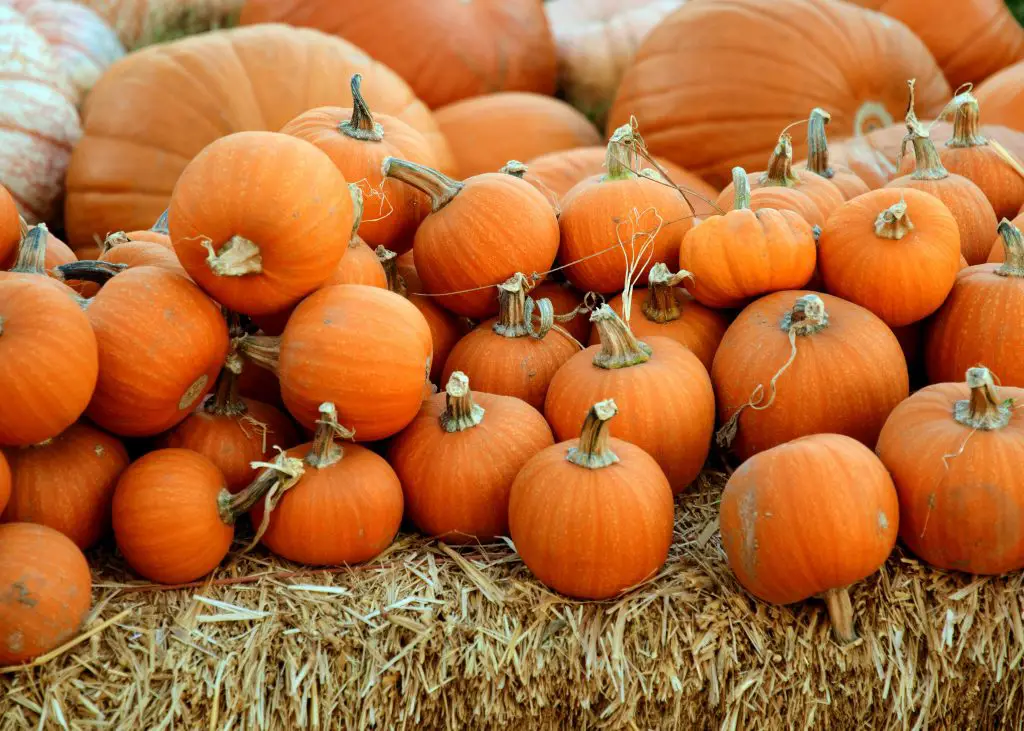Do Pumpkins Grow Back Every Year? Pumpkins are a popular vegetable to grow in the backyard as they are easily germinated and will produce a sizable crop that can be stored for several months. But do they come back every year?
Pumpkin is a tender annual plant that is sensitive to frost. As such the pumpkins need to be replanted every year to produce a reliable crop. While self-seeding is possible it is not a common occurrence, unlike some other vegetables, simply because the pumpkins are usually large and there are not a large number of them per plant. This means the fruit is rarely left on the vine to reseed.
Fortunately, the seeds are extremely easy to collect and require little effort. They can be scooped out of the center of the fruit the next time you are using a pumpkin in the kitchen. When collecting the seeds it is best to remove the pith and then wash the seeds before allowing them to dry. Some people even scoop out seeds from store brought pumpkins and plant them. To read more about the advantages and disadvantages of doing this click here.
When To Plant Pumpkins For The Following Year
Pumpkins can be sown 4 to 6 weeks prior to the last frost indoors in trays. When planting the seeds in trays where space is limited, it is best to plant 2 seeds per cell to ensure that there is at least 1 plant per cell in the plant. They should be planted at a depth of around an inch in seed raising mix.
In cases where more than one plant comes up remove the weakest seedling. Pumpkins in the right conditions will germinate quickly and can be ready to plant outside in as little as 3 to 4 weeks however this is dependent upon the growing conditions.

If you live in a cool climate and are planting vegetables every year it may be worth considering purchasing a heated propagation tray as they are relatively inexpensive and provide far greater control in terms of growing conditions. The model we recommend is iPower Heated propagation tray because it has a fitted dome that helps maintain a humid environment for the seedlings which produces ideal growing conditions. To see the latest price on Amazon click here.
The alternative is to plant the pumpkin seeds directly into the garden, however, this can only be done later in the season when the risk of frost has passed. Like the seeds planted in trays, it is advisable to plant at least 2 to 3 seeds in every location where you want the pumpkin to grow to ensure that at least one plant appears.
Seeds or seedlings should be planted approximately 3 feet apart into rich moist soil as pumpkins require a lot of nutrients during the growing season. It is also advisable to the soil be mulch to help retain moisture.
Caring For Pumpkin Plants
When the seedlings are young and either first appear or are transplanted into the garden they will need protection from slugs and snails. The best way to protect the plant is to provide a physical barrier in the form of a cloche. The cloche not only stops pests but also increases the temperature around the plant accelerating growth.
Cloches do not need to be purchased from a store they can be made using old milk cartons with the bottom cut out. The alternative to cloches is to use snail pellets which are effective but relatively costly. Either way protection really only needs to be applied in the first few weeks. After this point plants are generally large enough to survive slug attacks.

In addition to protecting the plants from slugs, it is also important to ensure that the plants are watered regularly particularly when the weather is hot. When watering it is best to do it in the morning and avoid splashing water on the leaves. The reason for this is that wet and humid conditions can encourage the formation of powdery mildew.
As the plant develops in size it will begin to trail and it may be necessary to control it by removing at least some of the leaves if the plant is really getting out of hand. If you have limited space you may consider growing it over a trellis however you will need to train it over the structure.
You can also get more out of a small space by planting companion plants in the same area. The most traditional combination is corn and climbing beans. However, it is advisable to grow beans for drying rather than green beans as it can sometimes be difficult to find the beans among all the growth. The other alternative to growing corn is Jerusalem artichokes which create a tall support structure in a similar way to corn.
Harvesting Pumpkin
Pumpkins will generally be approaching the point of harvest when the pumpkin vine is dying back. At this stage, the pumpkin vine will often be afflicted with powdery mildew which looks a little unsightly but really doesn’t affected the harvest. If you are concerned about the appearance you can read more about how to treat it by clicking the link here.
Allow the vine to completely die back and then look for the skin of the pumpkin to change color. It will typically go from a light green color to some other color which will vary depending upon the variety. Another indicator is that the fruit will begin to sound hollow when you tap on them.

When you are ready to pick the pumpkins it is important to ensure that 2 inches of stem are left on the fruit. The reason for this is that the stem acts as a barrier to prevent bacteria from getting into fruit which extends its shelf life.
A pumpkin can last up to 12 months if the stem is left on and it is stored in reasonable conditions. However, if the stem is knocked off it is not the end of the world as the pumpkin will still last a few weeks. You simply need to eat those pumpkins first.
Related Articles
Can I plant pumpkin seeds from a store brought pumpkin?
Why are my pumpkin leaves turning white?
How Much Space Do You Need Between Pumpkin Plants?
How Many Pumpkins Are Produced Per Plant? And How Big Are They?
Can Pumpkin Be Grown In A Pot? (And Here Is How To Do It)
Are Pumpkins Berries? If So, Why?
